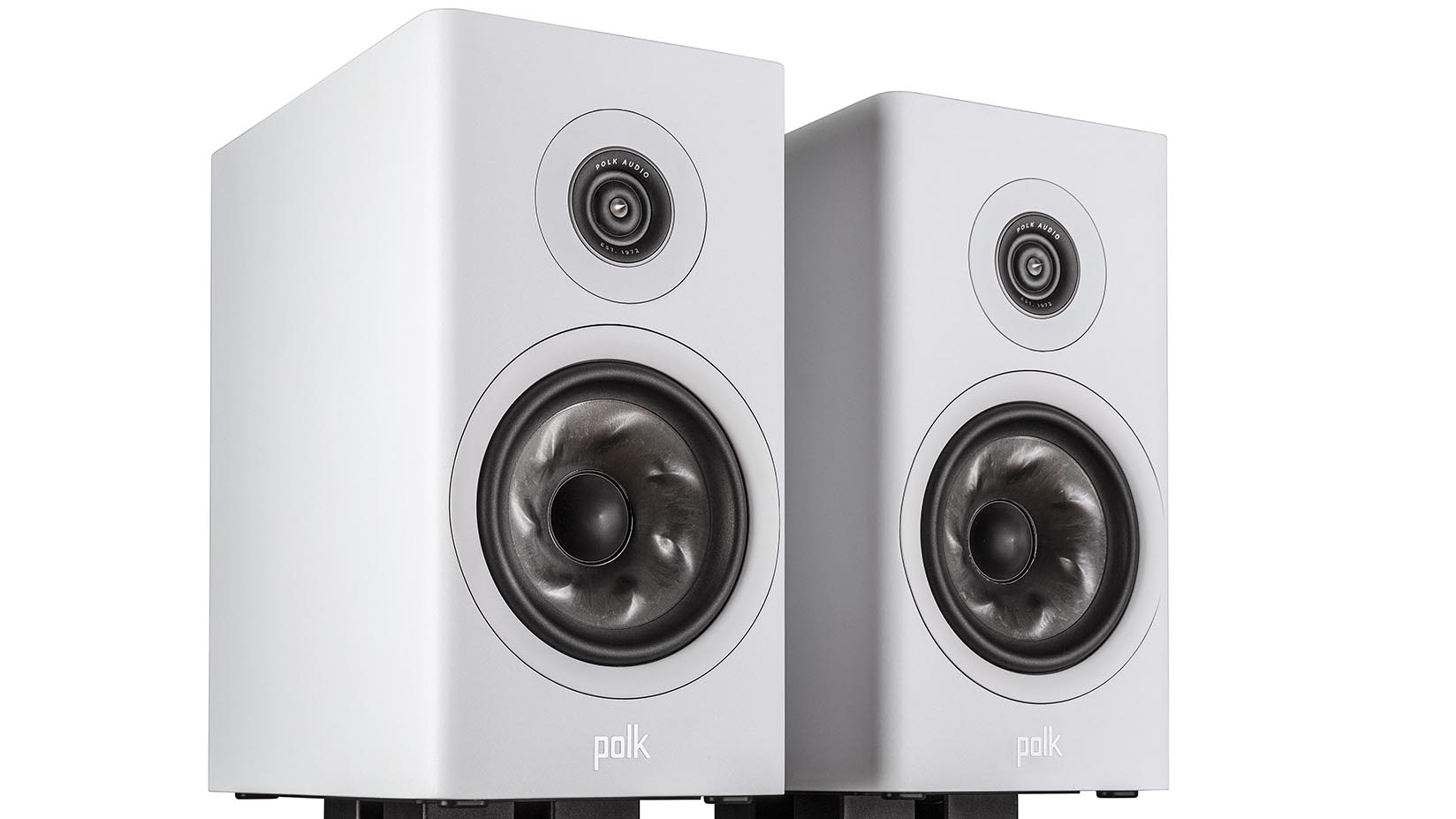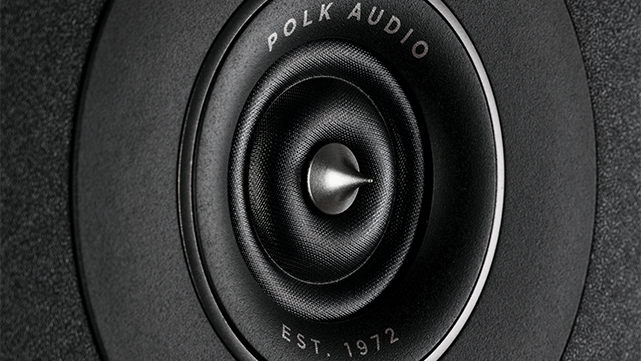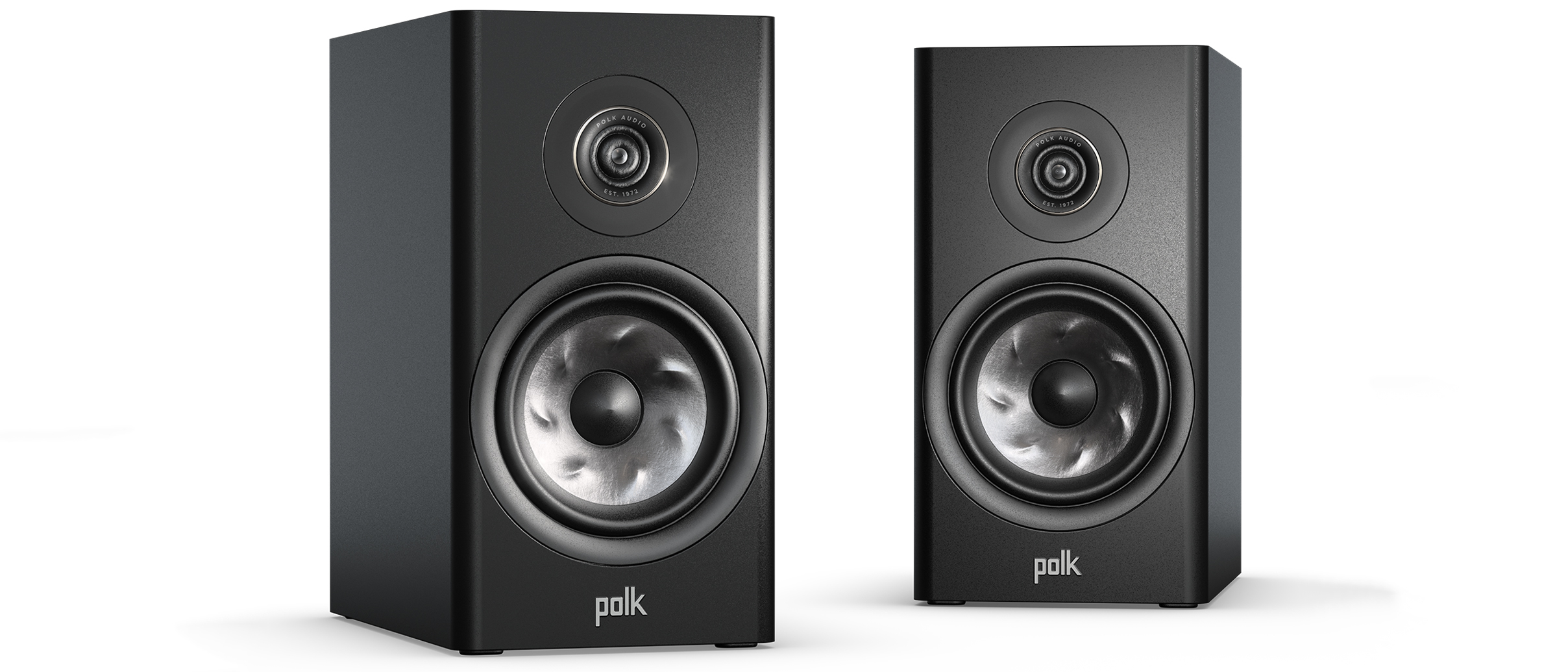Sound+Image Verdict
Part of a wide and versatile new ‘Reserve’ collection, Polk’s R200 standmounters combine fine drivers with cabinet innovation to deliver powerful performance at the price.
Pros
- +
Clarity and command
- +
Impressive bass punch
- +
Incredible value
Cons
- -
Unforgiving of edgy recordings
Why you can trust What Hi-Fi?

This review originally appeared in Sound+Image magazine, one of What Hi-Fi?’s Australian sister publications. Click here for more information on Sound+Image, including digital editions and details on how you can subscribe.
Polk’s position within the Sound United stable of products has given it a new home in Australia alongside the rest of Sound United’s brands: Boston Acoustics, Bowers & Wilkins, Classé, Definitive Technology, Denon and Marantz.
The change in distribution coincides with a new range – the Polk Reserve series of speakers, which sits just below the company’s flagship Legend series. Indeed the new speakers use the same custom-made drivers developed for the Legends, including the proprietary Pinnacle tweeter and ‘turbine cone’ midrange.
The new Reserve range is extensive indeed, with three floorstanding models, three centres, two standmounts and a pair of ‘Atmos’ height modules which can sit atop other Reserve series speakers or be mounted to the wall to deliver the height effects of Dolby Atmos and DTS:X.

Needless to say, then, the Polk Reserve series caters to home cinema use as well as to stereo listening. All models are available here in Australia in matte black or a brown (walnut); a satin white finish will follow.
We began our introduction to the new Polk range with the larger of the two standmounting designs – the Polk Reserve R200, which arrived in their purposeful matte black finish.
Equipment
The R200 is a substantial standmounter – Polk describes them as ‘bookshelf’ speakers, but at 36cm high and 35cm deep that would be a fairly mighty bookshelf!
The matte black finish and dark speaker grilles of our review sample assisted them in receding somewhat into our décor, but they still presented a fairly physical presence, and all the more so as we quickly decided we preferred to both look and listen with the grilles off, so adding their notable drivers to the visual equation.
The latest hi-fi, home cinema and tech news, reviews, buying advice and deals, direct to your inbox.
Your own choice of whether to use the grilles may be influenced by any young children in the house, as the tweeter here is Polk Audio’s high-res-capable Pinnacle ring radiator, with its distinctive pointed waveguide tempting even adults to have a closer look, and children to reach out and touch.

This tweeter comes directly from Polk’s flagship Legend series, and its ring radiator design means no central dome to enter break-up modes, so here achieving lower distortion within the listening range and indeed beyond, as the Pinnacle is ‘hi-res certified’.
External and internal waveguides control the dispersion of such high-frequency energy, aiming to deliver a wider sweet spot and more consistent sound across listening positions. The Pinnacle tweeter also enjoys its own sealed cavity filled with damping material, which Polk indicates removes a ridge of internal resonance at 2.5kHz, slightly below the 3kHz crossover point in this model.
The Pinnacle’s copper cap also reduces inductance and flux modulation, aiming to further boost high frequency performance and further reduce distortion; Polk’s own measurements show the tweeter output impressively flat to around 35kHz.
The ‘turbine cone’ drivers are so called for the asymmetric bumps which the injection-molding process has added to the foam-core polypropylene cones, with this ‘turbine’ geometry claimed to minimise resonances around 5.5-6kHz which would occur in a smoother cone equivalent, thereby hampering a true pistonic motion, while the turbine bumps and a suitably impedance-matched surround avoid this, dramatically increasing stiffness and damping but without adding mass to the cone itself.
Nevertheless the cone construction is around double the thickness of more ordinary polypropylene cones, having what Polk entertainingly describes as a “chewy centre” with a “crunchy outside”. The result is impressively linear midrange response – rising, indeed, to around 9kHz, far above the crossover here.
While in the larger Reserve models this driver is used for the midrange alone, its bass performance is, as we’ll see, still suitable for unsupported use in a standmount design, maintaining output fully down to 150Hz then declining relatively slowly to be 6dB down around 70Hz.
Port arrivals
There’s an additional secret weapon here, visible at the rear, above the pair of solid 5-way binding posts. The port is most unusual in both design and appearance, with a pointy torpedo sticking out of it, held in the centre of the port by three radial struts.

This is Polk’s new X-Port, as featured on the centre speakers and standmounts of the Reserve range, while the floorstanding R600 and R700 have instead Polk’s new Power Port 2.0 in their base, firing downwards. Polk’s original Power Port was patented back in 1996, and minimised air turbulence by attaching a waveguide to the opening of the port.
“The original PowerPort was all about bass performance and to avoid port noise,” Polk personnel apprised us at a special presentation to EISA editors. “The port on a loudspeaker helps to get more lower frequencies and to increase sensitivity of the speaker – but maybe nobody told you that this comes at a price.”
This is true. A port utilises the back energy from drivers in a cabinet to produce more bass output, though this is centred on the tuning frequency of the port and the volume of air inside the cabinet.
Below the tuning frequency, the output of the port and the transducer become out of phase with each another so that the bass drops off faster than for a sealed-box design. Above the tuning frequency, also, the open-ended pipe creates what are often called pipe-organ resonances that can cloud the midrange. So Polk’s new Power Port 2.0 works also to clean up the upper bass and midrange.
“On top of the cone of the waveguide we build a ‘hollow pole’ with an opening that is halfway into the port, and tuning of this pipe is done to multiples of tuning of the port frequency,” says Polk. The effect is significant, notably reducing a large 14dB resonance peak occurring at 700Hz.
Further relieving resonance in the floorstanders is a new internal bracing Polk calls Column Resonance Control.
“The biggest and most annoying resonance of a floorstander is between the foot and the top plate,” Polk tells us. “Depending on the height of the cabinet this is usually between 150 and 200Hz. Our CRC construction clearly eliminates the resonance peak of the cabinet – the result is uncoloured bass and midrange.”
In the bookshelf models and the smaller floorstander of the Reserve range, Polk has applied the same principle to this torpedo-clutching new X-Port; this uses a set of closed-pipe absorbers tuned to the internal frequency of the cabinet, acting as an eigentone filter (the port itself is labelled ETF) to maintain the bass output while aiming to reduce traditional speaker distortions, clarifying the upper bass and midrange.
Listening
The R200s are impeccably-finished speakers; the radiused corners are smooth and the sections meld perfectly along the edges at top and bottom. Their binding posts are solid indeed, ready for your connection of choice – we used banana-terminated Audioquest cables, another brand that has just come under Sound United distribution in Australia.

Beneath the binding posts is the faceplate sticker locating Polk in Carlsbad, CA, while the production date of the speakers is printed in Chinese; text below the connectors confirms them to be “Designed and engineered in the USA; manufactured in China”.
We kept them on light duties for a week to warm them through while deciding on positioning, settling on solid stands toed in slightly to keep their pointy tweeters at ear height and directly at our ears.
While their response remained uniform across a wide sweet spot, their considerable imaging abilities were clearly best enjoyed sitting dead centre to within a few centimetres, to perfectly equalise the treble from those ring radiators.
While they hadn’t put a foot wrong during their week’s warm-up, it quickly became apparent that these speakers relish being turned up and driven with some quality power – again we were able to supply this from two Sound United stablemates, using both the Marantz amp reviewed elsewhere this issue, and our resident reference Classé amplification.
Indeed turning them up was an increasing pleasure because they neither distorted under duress, nor crumbled under complexity. The midrange from the turbine cones merges impeccably with the tweeters’ output, and vocals are particularly strongly projected.
The acoustic instruments in the arrangement of Missy Higgins’ Nightminds became almost recessed, such was the prominence and crispness of her vocal. On Sweet Arms of a Tune it was the acoustic guitar which was thrust forward, with Higgins’ vocals almost too insistent; the R200s don’t forgive an edgy production. But when she is more truthfully captured, as on Greed For Your Love, the realism was tangible.
The harmonised vocals of The Finn Brothers were similarly spot-lit on Won’t Give In, presented three-dimensionally in the soundstage – Neil forward and low, Tim behind and higher. Also notable here was the pleasingly solid bass entry, with genuine bass depth to its fundamental G.
Even more impressive was the bass entry a minute into Midnight Oil’s Warakurna, pounding out Peter Gifford’s last Oils appearance to positively inhabit the central space of the soundstage; this followed the swirling atmosphere that opens this track, the little tinkles and trills amid the twinned guitars given life and movement by the clarity and air of the Pinnacle tweeters.
On the recent Roger Waters Us+Them live album there’s a meaty mechanical segue between The Great Gig in the Sky and Welcome To The Machine, and there was no ignoring the Polks’ power to impress here, spreading the effects wide while also granting the whole great substance, before embarking on the bass-bouncing intro to the 1975 classic.

Should you need to hide the drivers, for aesthetics or protection, the magnetic grilles are described as anti-diffraction and acoustically-inert, but for our ears they audibly tempered that open treble; we left them off, preferring the aesthetic and the response.
The success of the X-Port’s eigentone filter may be audible in the remarkable midrange, which is entirely unencumbered by bloom or boom. This not only clarifies a mix to open up the soundstage, it delivers a sensational evenness across the frequency spectrum, so that every note of the rolling piano scales in Jonas Vitaud’s recording of Beethoven’s 7 Bagatelles emerged differentiated in frequency yet even-fingered in impact. The Polks proved as impressive with piano as with punk.
One last trick with the R200 – you can fit Polk’s Reserve R900 Atmos modules to the top. Remembering the full Reserve range and their home cinema application, we can imagine the impact that would come from a set of four R200s topped by Atmos-enabled speakers, supported by a suitable centre and subwoofer.
Final verdict
The word ‘Reserve’ has a remarkable variety of potential meanings: ‘reserve’ as in shyness, ‘reserve’ as in substitute; it can mean a feeling of doubt, constraint, repression – even a lack of warmth. Not one of those definitions would seem to apply to these substantial standmount speakers.
The R200 proved truthful at both low levels and high, able to deliver a solid bass and a remarkable clarity of midrange assisted perhaps by that new X-Port, while the Pinnacle tweeter gifts an airy and open treble beyond the likely limits of perception.
And what entirely flabbergasted us on completion of our review was the price, which we did not know until the end. We’d have put them at least double the actual price. So in addition to being marvellous standmount speakers, the Polk R200s are a bargain.
Sound+Image is Australia's no.1 mag for audio & AV – sister magazine to Australian Hi-Fi and to the UK's What Hi-Fi?, and bestower of the annual Sound+Image Awards, which since 1989 have recognised the year's best hi-fi and home cinema products and installations. While Sound+Image lives here online as part of our group, our true nature is best revealed in the print magazines and digital issues, which curate unique collections of content each issue under the Editorship of Jez Ford, in a celebration of the joys that real hi-fi and high-quality AV can bring. Enjoy essential reviews of the most exciting new gear, features on Australia's best home cinemas, advice on how to find your sound, and our full Buying Guide based on all our current and past award-winners, all wrapped up with the latest news and editorial ponderings. Click here for more information about Sound+Image, including links to buy individual digital editions and details on how best to subscribe.


